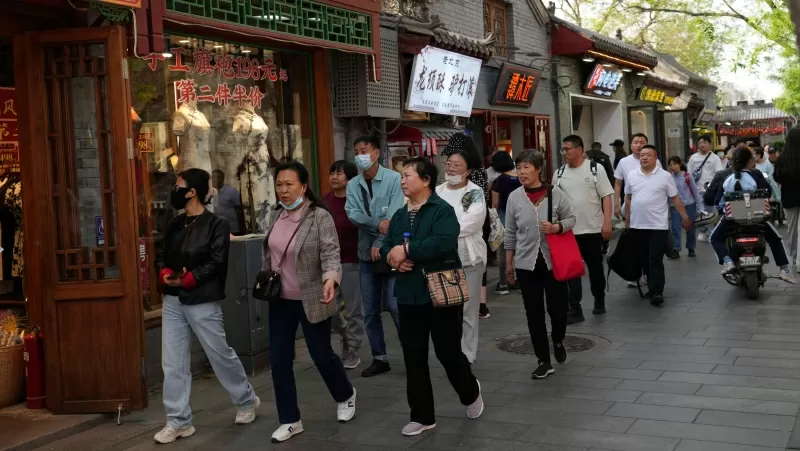China has been a leader in economic growth and development over the past few decades, but this progress has come at a cost. Nearly half of China’s major cities are currently experiencing moderate to severe levels of subsidence, a process in which the ground sinks due to various factors. This poses a serious threat to the safety and well-being of millions of people, especially as sea levels continue to rise.
Subsidence is a natural process that occurs when the ground sinks due to the depletion of underground water or the compression of soil layers. However, in China, human activities such as rapid urbanization, excessive groundwater extraction, and the construction of high-rise buildings have significantly accelerated this process. According to a recent report by the Ministry of Land and Resources, 46% of China’s 654 major cities are facing subsidence, with some areas sinking by more than 10 centimeters per year.
The consequences of subsidence are severe and far-reaching. As the ground sinks, it can cause damage to buildings, roads, and other infrastructure, leading to costly repairs and potential safety hazards. In coastal cities, subsidence can also increase the risk of flooding, especially as sea levels continue to rise due to climate change. This puts millions of people at risk, as many of China’s major cities are located in low-lying areas.
One of the cities most affected by subsidence is Shanghai, China’s financial hub and home to over 24 million people. The city has been sinking at an alarming rate of 2.8 centimeters per year, with some areas experiencing even higher rates. This has led to increased flooding during heavy rains and high tides, causing extensive damage to homes and businesses. The situation is further compounded by the fact that Shanghai is built on soft soil, making it more susceptible to subsidence.
The Chinese government has recognized the seriousness of the issue and has taken steps to address it. In 2018, the Ministry of Housing and Urban-Rural Development issued guidelines to regulate the construction of high-rise buildings and limit the extraction of groundwater in areas prone to subsidence. The government has also invested in technologies such as satellite monitoring and underground water recycling to better understand and manage the problem.
However, more needs to be done to mitigate the effects of subsidence and protect the millions of people living in at-risk areas. The first step is to raise awareness about the issue and educate the public on the importance of conserving groundwater and implementing sustainable urban development practices. This can be achieved through public campaigns and educational programs in schools and communities.
Furthermore, there is a need for stricter enforcement of regulations and laws related to construction and groundwater extraction. Local governments should also work closely with experts and scientists to better understand the causes and patterns of subsidence in their respective areas, and develop effective strategies to address them.
In addition to these measures, China can also learn from other countries that have successfully dealt with subsidence, such as the Netherlands and Japan. These countries have implemented long-term solutions such as the construction of sea walls and dikes, and the implementation of advanced drainage systems. These measures have not only helped to prevent flooding but have also contributed to sustainable urban development.
Despite the challenges posed by subsidence, there is still hope for China’s cities. With the government’s commitment to addressing the issue and the collective efforts of citizens, we can work towards a future where our cities are safe and sustainable. It is crucial to act now before the situation worsens and the cost of inaction becomes too high.
In conclusion, subsidence is a pressing issue that requires urgent attention and action. It not only poses a threat to the safety and well-being of millions of people but also hinders sustainable development. With the right strategies and collective efforts, we can overcome this challenge and create a better future for China’s cities. Let us work together to protect our cities and build a more resilient nation.

